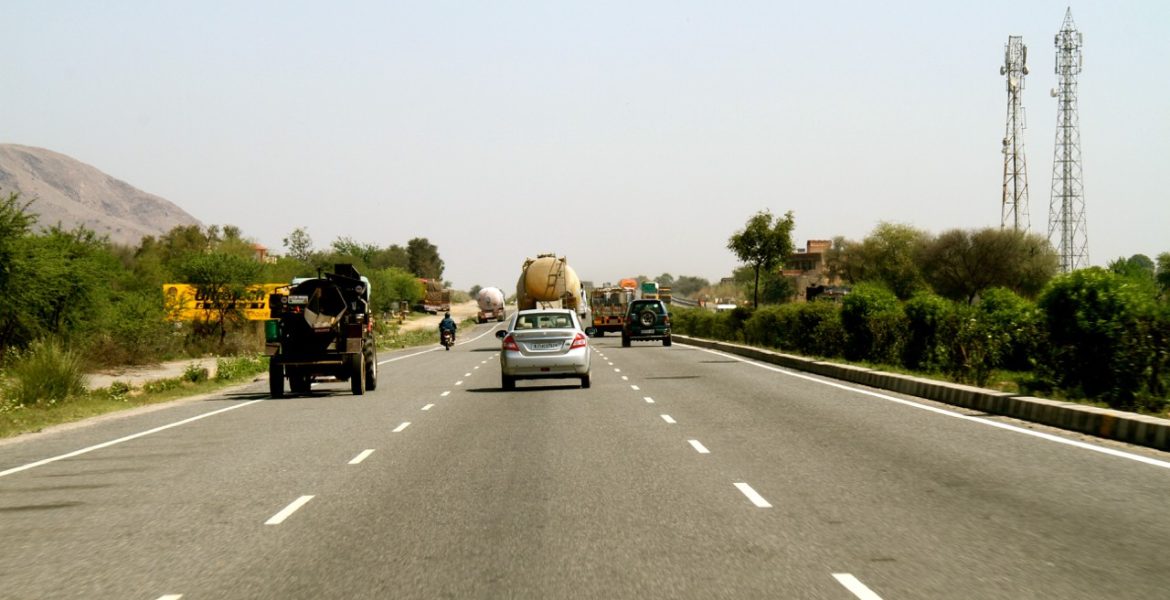Public Private Partnerships: Bridging the Infrastructure Gap
April 21, 2025 2025-04-21 5:16Public Private Partnerships: Bridging the Infrastructure Gap

Public Private Partnerships: Bridging the Infrastructure Gap
By Shreyas Ernest Isaac
Source: Creative Commons
Why do we need Infrastructure?
The United Nations Office for Project Services states that infrastructure is not merely just building roads and railways, but is the creation of an interconnected system, which connects people to employment opportunities, education and is essential for progress towards the sustainable development goals (UNOPS, 2024). Infrastructure provides the basic underpinning physical facilities which are essential to both businesses and societies (Thacker et al., 2018). It is not too hard to understand why economic growth itself is a function of the economy’s infrastructure- without vast road-networks, logistics hubs, airports, sea-ports, railway lines etc, large scale economic activity is almost impossible. Urbanisation too requires large scale infrastructural projects such as metros and other public transport systems, which in turn boost employment levels, increase connectivity and expand the opportunities available to citizens. The Government of India for instance states that for every rupee spent on infrastructure, the GDP of India is boosted by 2.5 rupees to 3.5 rupees (Invest India, 2023). From a more theoretical view, infrastructure boosts the ‘productivity’ of private capital and labour, which leads to an increase in the overall output in the economy (Huntley, 2021).
Why should the Government spend on Infrastructure?
Seen from the lens of public finance, governments are required to step into the infrastructure market for three major reasons. To begin with, several infrastructural projects happen to also be public goods i.e. goods which are non-excludable and non-rivalrous in nature- which implies that neither can we stop anyone from consuming these goods, nor does the consumption of these goods by one person, reduce the amount available to another person (Stiglitz & Rosengard, 2015). Due to this unique feature that several infrastructural projects have, it becomes essential for governments to step in and undertake infrastructural projects, either by building the project themselves or through public private partnerships, as the private sector may not have enough incentive to produce these goods. It is important to note that not all infrastructure projects are strictly public goods, and several exceptions can be pointed out.
The second reason is that infrastructure creates several positive externalities in the economy. Positive externalities are ‘benefits’ that people who are not involved in an economic transaction receive, without having to pay for the benefit (the construction of a metro line in a city for instance, could lead to increases in the property prices of areas through which the metro line runs). The concern with positive externalities is that societies generally tend to under consume or under produce goods that have positive externalities (Stiglitz & Rosengard, 2015). This under-consumption and under-production on the supply and demand side, requires the government to step into the market, either through subsidies (to boost production), or tax cuts (to boost consumption). The Viability Gap Funding provided by the Government of India to certain types of infrastructural projects built using a public private partnership, can be used as an example of such a subsidy.
The third reason why spending on infrastructure projects by the government is seen as an important activity is that all spending on creating infrastructure within the country essentially falls under the bracket of ‘Capital Expenditure’ or ‘Capex’ as it is commonly called. Capital expenditure in the union budget or any state budget, would be expenditure that impacts the asset-liability status of the government (Karnam, 2022). Infrastructure expenditure is asset creating expenditure, and is therefore seen as an essential component in boosting a country’s productivity levels and economic growth through government spending (fiscal policy).
Public Private Partnership Projects
Infrastructure projects however are complicated projects, requiring a huge amount of initial investment to get them going. Most infrastructural projects take several months to be completed and require a huge amount of manpower. It is in this context that a new innovation in the realm of public service delivery emerged with the concept of a ‘Public Private Partnership’ (PPP). A PPP project can take many forms and shapes, but the core of any PPP project is to leverage the skills, expertise and efficiency of the private sector, to boost the capacity of the government to provide services and public goods for all citizens.
A PPP project usually involves a contract between the government department or ministry and a private firm, usually selected through a competitive tendering process. The agreement (called a Concession Agreement) spells out the obligations and scope of work of both parties. In some instances, a new company is incorporated (called a Special Purpose Vehicle), to facilitate the successful completion of the project. PPP projects can take many forms and shapes, with varying degrees of risk and responsibility sharing between the selected private sector firm and the government. Some popular models of PPP projects in the realm of infrastructure development include: Design, Build Operate Transfer (DBOT), Hybrid Annuity Model (HAM), Build Operate Transfer (BOT) etc. In its very rudimentary form, a PPP project could just mean that the government requires the private firm to simply just aid in the operations and maintenance of a project (an O&M contract). More complex PPP projects could require the firm to not just build, operate and transfer the project back to the government, but could also require the firm to finance the project with some support from the government.
The private firm who enters into a PPP project would recover their investment in the project (along with a profit margin), either through tolls/user fees or through mandated payments from the government, according to the agreement. In case the private firm is unable to meet the obligations under the agreement, the government would have the right to withhold payments or terminate the agreement. In some PPP contracts, the payments would be linked to certain performance parameters (such as reducing the leakage in municipal water networks).
In several ways, PPP projects in India have revolutionised the infrastructure sector of the country. From early successes in highway projects, the scope and complexity of PPP projects in the country have expanded, along with the expanding definition of ‘infrastructure’ itself. The Bangalore International Airport (BIAL), was one of the first PPP based greenfield airports in the country, which led to several other similar projects coming into focus. Recent years have also seen several PPP projects in different infrastructure sectors such as skill development, tourism, logistics, renewable energy etc. Several states in India have developed their own dedicated PPP units/departments, and in 2020, the National Infrastructure Pipeline (NIP) was launched by the Indian government, which envisions around 111 lakh crore rupees to be spent in the sector over the next five years. India also has a dedicated Viability Gap Funding Scheme, that provides extra government funding for certain projects done in a PPP model, which are termed as being important, but fall short of being economically lucrative for private firms to invest in. There is no doubt that the next few years will see an increased amount of PPP projects in the country, as India gets ready to move towards a five trillion-dollar economy, while also meeting several obligations under global climate pacts that require us to promote climate friendly infrastructure projects.
References
D’Souza, R. (2023, February 10). Budget 2023: Inside infrastructure spending. Observer Research Foundation. https://www.orfonline.org/expert-speak/budget-2023-inside-infrastructure-spending
Government of India, Invest India. (2022, August 3). Growth of infrastructure sector in India. https://www.investindia.gov.in/team-india-blogs/infrastructure-development-india
Huntley, J. (2021, June 15). The economic effects of infrastructure investment. Wharton Budget Model, University of Pennsylvania. https://budgetmodel.wharton.upenn.edu/issues/2021/6/15/economic-effects-of-infrastructure-investment
Karnam, G. (2022). Public expenditure in India. Oxford University Press.
Stiglitz, J. E., & Rosengard, J. K. (2015). Economics of the public sector (4th ed.). W.W. Norton & Company, Inc.
Thacker, S., Adshead, D., Morgan, G., Crosskey, S., Bajpai, A., Ceppi, P., Hall, J. W., & O’Regan, N. (2018). Infrastructure: Underpinning sustainable development. United Nations Office for Project Services (UNOPS), Copenhagen, Denmark. https://content.unops.org/publications/Infrastructure_underpining_sustainable_development_EN.pdf
United Nations Office for Project Services (UNOPS). (2024, October 21). Infrastructure. https://www.unops.org/expertise/infrastructure






